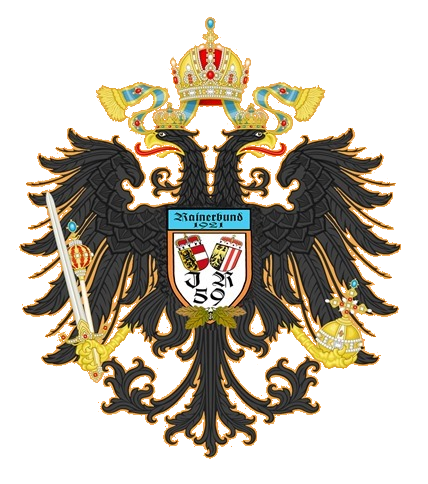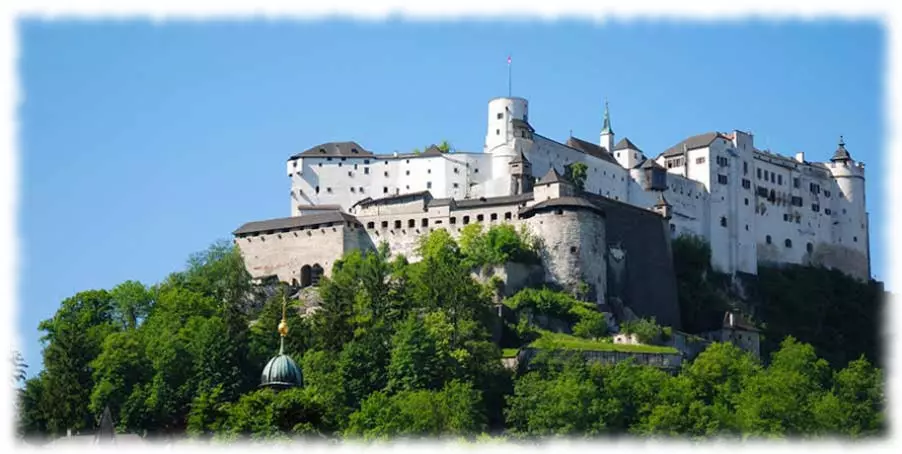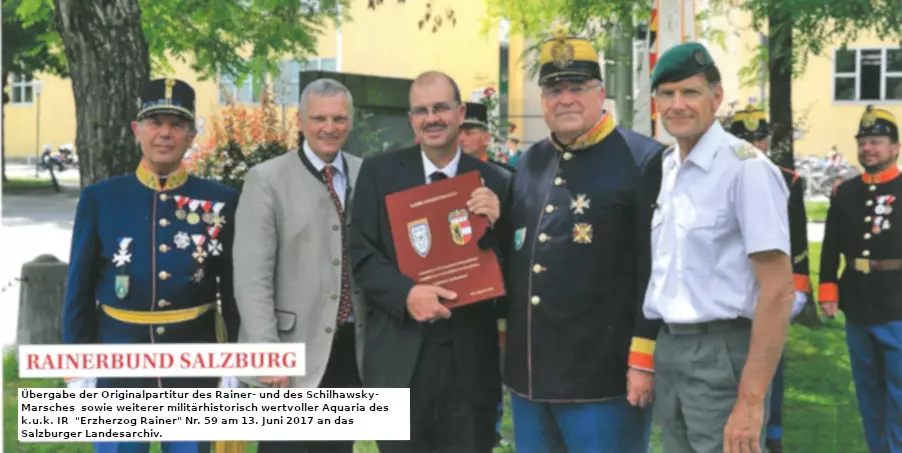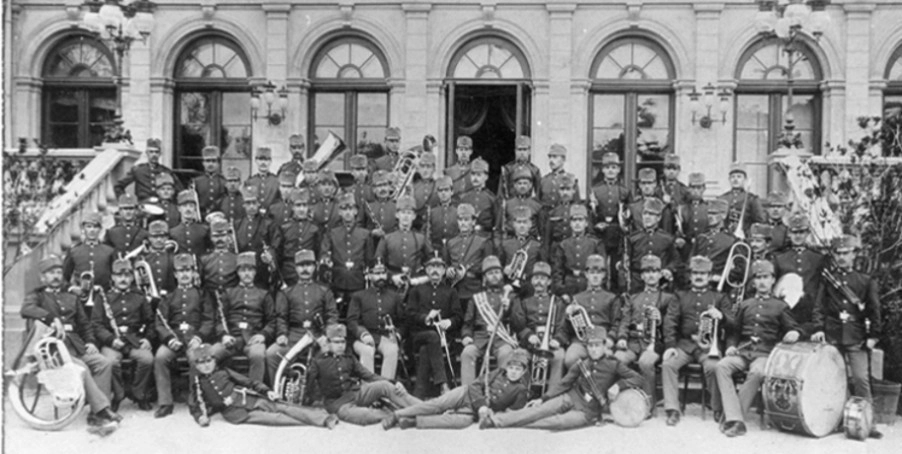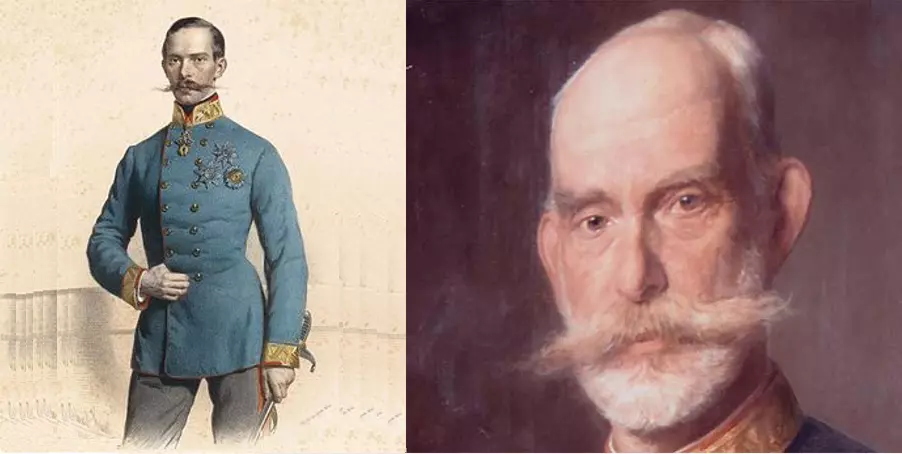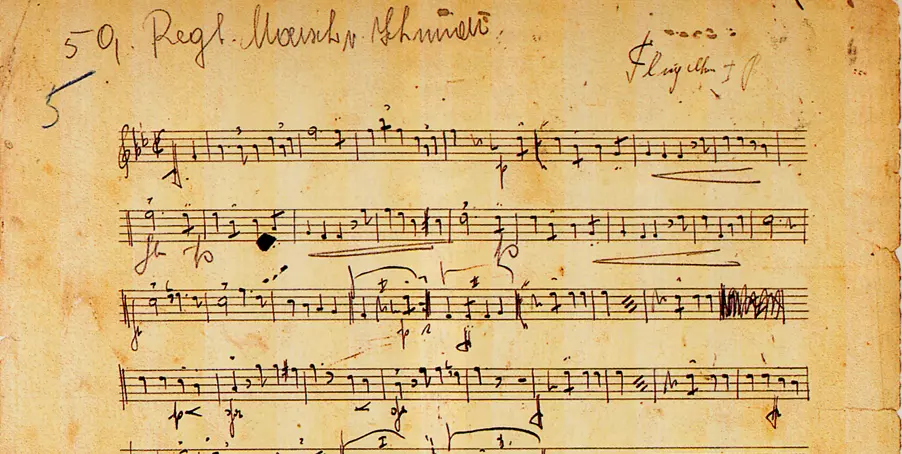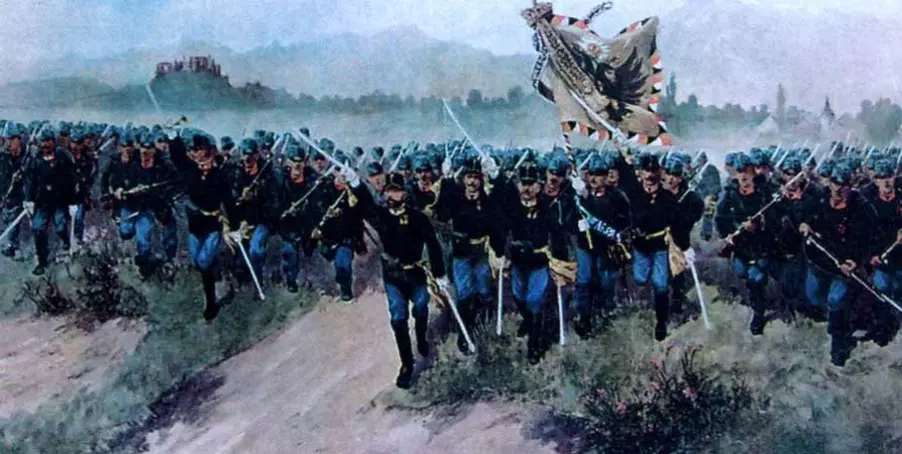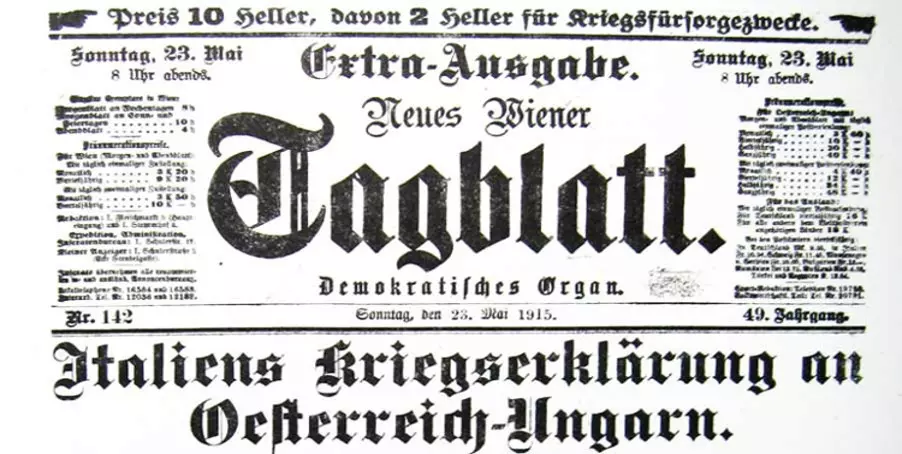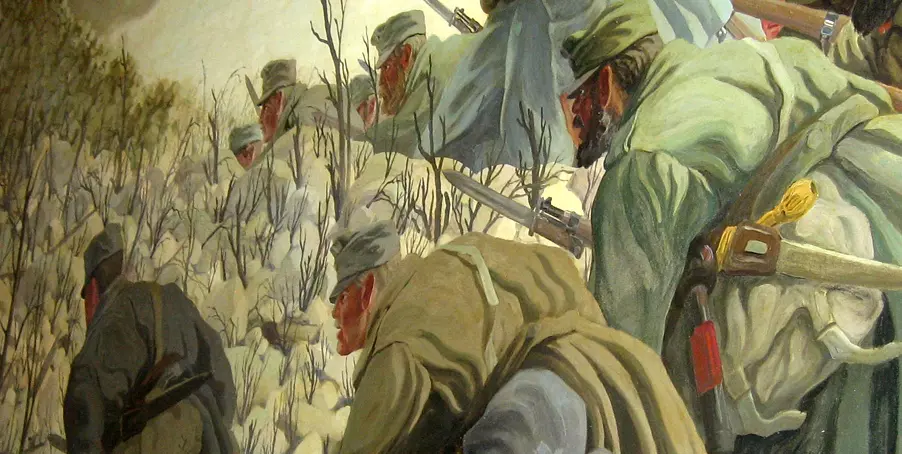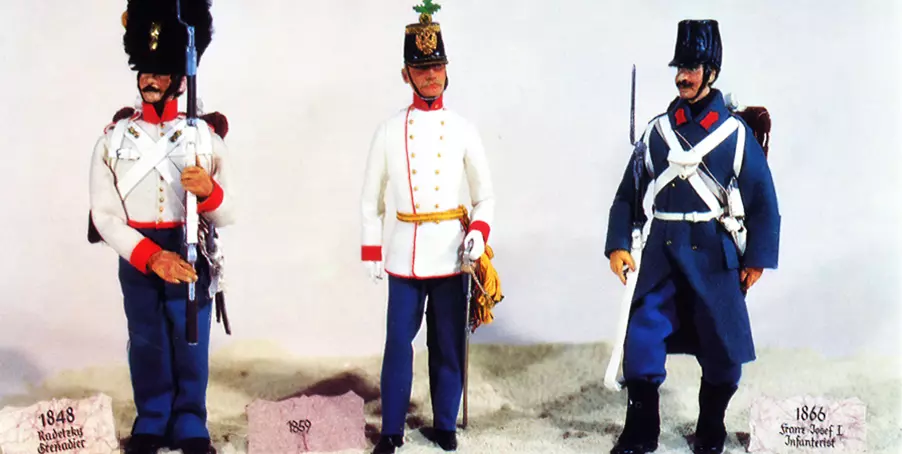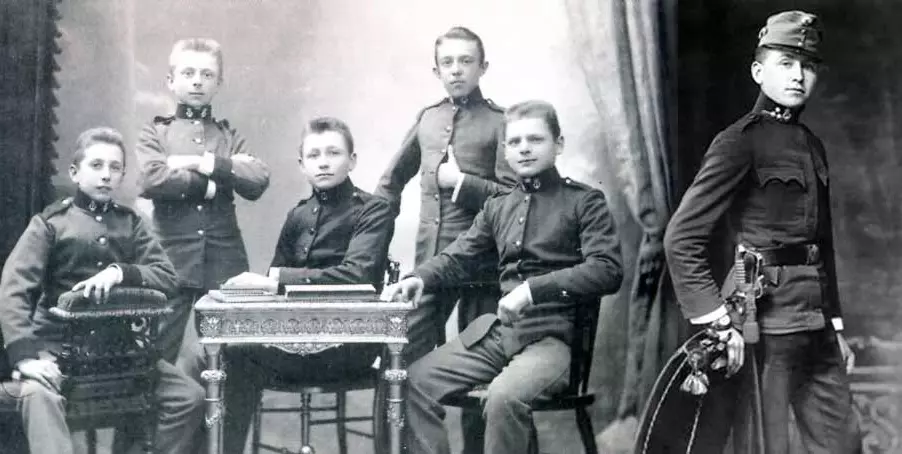World War One (1914 - 1918)
(The Tyrolean Front (1915 - 1918)
Events leading up to the war...
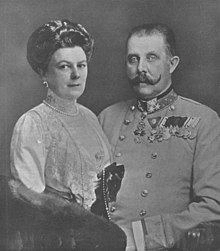 Crownprince Archduke Franz Ferdinand and his wife, Sophie Duchess von Hohenberg
Crownprince Archduke Franz Ferdinand and his wife, Sophie Duchess von HohenbergOn June 28th, 1914 in Sarajevo, the heir to the throne, Archduke Franz Ferdinand, and his wife, Sophie Duccess of Hohenberg, fell victim to the bullets of Bosnian assassins, who today would be considered terrorists. The Serbian Secret Society "Unification or Death," was found to have masterminded the assassination. In an ultimatum the Austro-Hungarian Empire demanded that the Serbian Kingdom punish the organisation responsible for the assassination. When this ultimatum remained unanswered, as was expected, the Danube Monarchy declared war on July 28th, 1914. This triggered an avalanche of mobilisation and war declarations among the European military alliances – the Triple Alliance (Austro-Hungarian Empire, Germany and Italy) and the Triple Entente (France, Great Britain and Russia). This resulted in World War I and the eradication of three European empires: the Austro-Hungarian Empire, the German Empire and the Russian Empire.
The Austro-Hungarian Armed Forces
On August 4th, 1914, the Austro-Hungarian Empire mobilised its entire armed forces in response to Russia’s general mobilisation. This consisted of – a special feature of the Austrian Danubian Monarchy – three equally strong armies existing alongside one another, and under three different ministries: the joint Austro-Hungarian Army with the joint Austro-Hungarian Navy, the Austrian Imperial-Royal Landwehr (army) with its Landsturm (militia) and the Royal Hungarian Honvéd (army) with its Landsturm (militia). Out of every 100 soldiers in these assorted units there were 25 German speaking, 23 Hungarian, 13 Czech, 4 Slovak, 8 Polish, 8 Ukrainian, 2 Slovenian, 9 Serbian or Croatian, 7 Romanian and 1 Italian. The various nationalities dominated among the individual infantry and cavalry regiments however, so that along with the overall German command language there were different regimental languages.
The infantry, cavalry, artillery and train troops carried the major burden of the fighting action, and they were supported by technical units, supply and ambulance troops. At the beginning of the war, airships and motorized troops were just being developed, but became increasingly significant as the war progressed. The imperial borders with Russia, Serbia, Montenegro and Italy, along with coastal regions were protected by fortifications with varying armaments and training. The trench and high mountain warfare in particular led to significant changes in organization, weaponry and adaption of fighting troops, creating a new image of the soldier.
Italy's entrance to the war
At the beginning of the war, the Kingdom of Italy abandoned its duty to the Triple Alliance by declaring neutrality. Shortly thereafter, it prepared for a possible war against its former allies, through secret diplomacy talks with the Entente powers Russia, France and Great Britain. The phrase for this was "sacro egoismo". By April 1915, Italy made territorial demands with London’s blessings against Austria-Hungary for Tyrol up to Brenner, Friuli and Trieste along with their surrounding land. On May 4th, 1915 the Triple Alliance was nullified by Italy, and by this point in time it had already made all military preparations for war on the side of the Entente Powers. The declaration of war against Austria-Hungary took place in Vienna and Budapest on May 23, 1915. Emperor Franz Joseph I reacted to this in a manifesto beginning with the following sentences:

"To my people! The King of Italy has declared war against me. This act of betrayal by the Kingdom of Italy toward its two allies is unparalleled in history..."
The Tyrolean Front
At the time of Italy’s declaration of war, the Tyrolean border offered the attackers almost no military resistance. The infantry and militia regiments of the army and militia that were trained for mountain warfare were fighting on the Eastern battlefields. The burden of defending the country lay on the shoulders of a few militias, reserve units, marching companies, national police and border patrol troops.
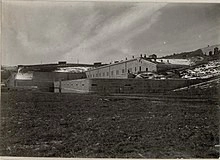 the Italian ouvrage Forte Leone on Cima Campo above the Sugana valley east of Trento, conquered by the Meran rifle battalion Standschuetzen-Bataillon Meran on November 12 1917
the Italian ouvrage Forte Leone on Cima Campo above the Sugana valley east of Trento, conquered by the Meran rifle battalion Standschuetzen-Bataillon Meran on November 12 1917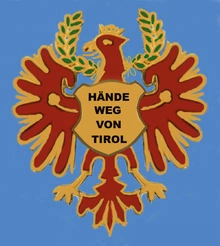 beret emblem of the Tyrolean Rifle Companies ("Standschuetzen")
beret emblem of the Tyrolean Rifle Companies ("Standschuetzen")In keeping with tradition, these were joined by Tyrolean and Vorarlberg rifle companies and other voluntary units from Austrian crown lands, young, old and minimally-fit men. The frontier fortresses (works) were outdated, with the exception of the Lavarone Plateau. For strategic reasons, the military leadership was forced to move the defensive line back, giving up Austrian land regionally, and evacuating villages.
The arrival of the German Alpine Corps on May 25th, 1915 under Bavarian Commander Lt. General Krafft von Delmensingen brought the desperately needed relief in Brixen and Bruneck. While passing through a Tyrolean village, he is said to have asked: "I don’t see a single man in this entire village, only women, elderly and small children. What happened to all the Tyrolean men?" The answer was: "Their blood lies buried in Eastern Galicia. Whoever is still living is chasing after the Russians, while the very young and old are holding the line right where we are headed."
Soon afterward and again in May of 1915, the Austrian troops extracted from the Eastern battlefields arrived in Tyrol, so that the Southwest Front soon reached a defensive force of approximately 224,500 soldiers, 3,000 riders and 640 mobile artillery units. This proved enough to hold the Tyrolean line of defense until the end of the war in 1918, aside from a few mountain peaks. After a bloody winter war 1915/16, the Austro-Hungarian Army launched an offensive from South Tyrol on May 15th, 1916, which went down in history as its "Punitive Expedition.” This brought about territorial gains in the Asiago-Arsiero region and isolated Italian forts fell into Austrian hands, however this action was not able to achieve its objective of forcing a breakthrough into the Venetian Plain.
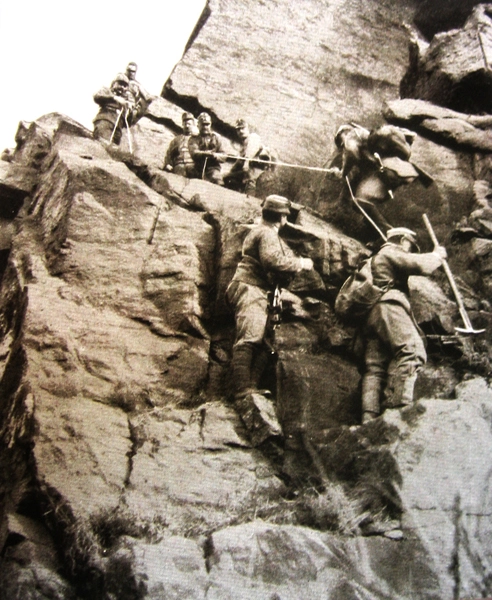
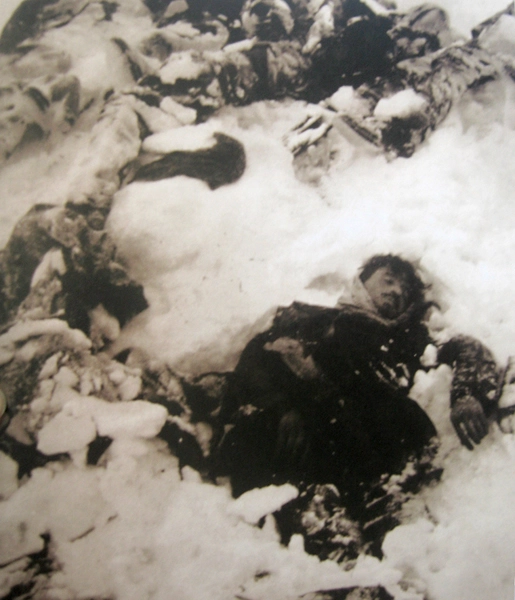
The mountain battles of Ortler and Tonale, as well as in the Dolomites continued on with relentless brutality, bringing the South Tyrolean Front a second winter war full of horror and losses. Heavy losses on both sides brought about the Landmine War, blasting away mountain peaks and creating devastating avalanches along the entire front. The fighting soldiers struggled to defend themselves against the human enemy in addition to the trials of mountain and weather. Attack and defense moved underground, creating branched systems of tunnels through rock and ice passages beneath glaciers.
On October 24th, 1917, the German and Austrian troops started a full-scale offensive operation from the Flitsch and Tolmino regions and reached the Piave River by November 12th, but they were still unable to break through to the plains. In the remaining Tyrolean battle regions and on the newly won frontlines the war caused further extremely heavy losses of soldiers….

